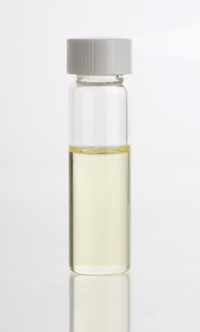
Photo from wikipedia
Abstract The essential oil of dry leaves and stems of Epilobium parviflorum Schreb. was obtained by hydrodistillation using a Clevenger apparatus, for 5 h with a 0.02% (w/w) yield. The qualitative… Click to show full abstract
Abstract The essential oil of dry leaves and stems of Epilobium parviflorum Schreb. was obtained by hydrodistillation using a Clevenger apparatus, for 5 h with a 0.02% (w/w) yield. The qualitative and semi-quantitative analysis of its hexane extract by GC-FID and GC–MS showed the presence of 216 components and 123 constituents accounting for almost 94% of the oil were identified. GC–MS analysis revealed that the essential oil predominantly contains palmitic acid (30.8%), linoleic acid (12.5%) and α-linolenic acid (10.8%) as its major constituents. Analysis of aromatic water remained after hydrodistillation was performed; the main constituents were a group of monoterpenoids (38.9%). The antimicrobial activity of the distilled essential oil and the remaining aromatic water was evaluated against five microorganisms (Staphylococcus aureus, Enterococcus faecalis, Escherichia coli, Pseudomonas aeruginosa and Candida albicans) using microdilution method. Results showed significant antibacterial activity against tested bacteria and yeast. The essential oil inhibited the growth of all tested bacteria and the minimum inhibitory concentration was determined to be around 10–40 μg mL−1, even in the case of yeast it was 5 mg mL−1. Distilled aromatic water contains much less substances but tests showed that it still has antimicrobial activity against all tested microbes (more on Gram-negative bacteria and yeast). Further, volatile profiles were also examined at other essential oils obtained by hydrodistillation of three pure herbal teas.
Journal Title: Industrial Crops and Products
Year Published: 2017
Link to full text (if available)
Share on Social Media: Sign Up to like & get
recommendations!